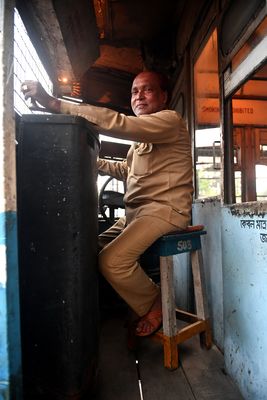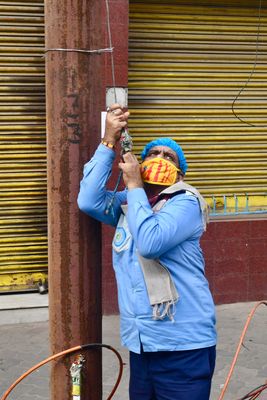My first brush with the tram was through a poem describing Kolkata by Rabindranath Tagore, which I read as a little boy. “Rasta cholechhe jato ajagar shaap/Pithe tar tramgari pore dhup dhap (The roads snaked like pythons/ The tramcars fell hard upon them),”read the poem. I also have memories of my father taking me on a tram ride in 1985. Much later, tram rides became a part of my daily life. Even now, on occasion, I take a tram from Dharamtala to College Street. Of the few routes on which the tramcar still plies, this is one of the oldest.
Inextricably connected to Kolkata, the agreeable and quaint tramcar is one of the city’s icons. In 1880, the Calcutta Tramways Company, registered in London, started its innings with the horse-drawn tram, thus marking the beginning of Asia’s longest-running tramways system. The first electric tram made an appearance in 1902. In its heyday, the tram plied on 52 routes. Connecting the twin cities of Kolkata and Howrah on the bank of the Ganga, it once plied right along the stretch of the Howrah Bridge. This service was discontinued in 1994.
Before independence, the tram tracks covered nearly 70km. As per the company’s records, in 1960 there were 450 tram cars running the length and breadth of the twin cities. But with urbanisation, the tram and its tracks made way for the metro and the flyovers. Tramways cause congestion on roads, it was argued. The counter argument would be that all forms of public transport, including buses and autos, contribute to the city’s traffic snarls. The tram is a mere casualty of modernisation, a victim of the system, so to say.
The near-departure of the environment-friendly, relatively cheap, sustainable and safe mode of public transport run by the government is somewhat intriguing. Although it is only in Kolkata that it still exists, it has been relegated to obscurity.
The death knell for tramways was probably sounded in 1992 when the Calcutta Tramways Corporation introduced a fleet of buses on 40 routes. The city chose speed over eco-friendliness, lament tram loyalists. Today, owing to the apathy of the authorities, the tram plies desultorily on just three routes. Its busiest route is said to generate a revenue of 15,000 per day.
However, the tram continues to draw a handful of people. An organisation of dedicated tram users, with the Calcutta Tram Users Association (CTUA) at its helm, is working to revive it. Since 2018, the association has organised campaigns and protests demanding increased services. “We wish to reinstate the tram to its rightful position because it is an eco-friendly form of transport that the city once loved, and we already have a fantastic infrastructure for it,” says Dr Debasish Bhattacharyya, president of CTUA.
While there have been efforts to revive the tram, like the mobile library inside one and a museum called Tram World Kolkata, they have not yielded much success. Kolkata could very well take a leaf out of Kochi in Japan and Melbourne—the Australian city continues to operate the world’s largest network of trams, with its 250km track and more than 5,000 services daily.
But all is not lost for Kolkata trams. At the C40 World Mayor’s Summit at Copenhagen in 2019, Firhad Hakim, then mayor of Kolkata, had said that trams would play an important role in making Kolkata’s transport system electric by 2030. He is now the transport minister of West Bengal. “We are committed to making Kolkata a green city,”he said soon after taking charge. “The tramways are very much in our scheme of things.”
Hope trundles on wheels.



